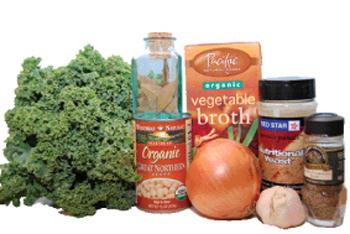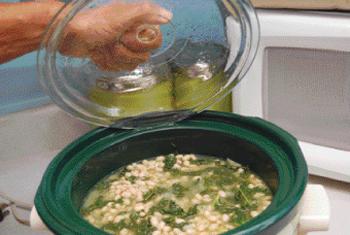My first job in a commercial kitchen was as a baker in a coffee house in Flagstaff, Ariz. On my last day of training another baker gifted me with what would become the most ear-marked cookbook in my collection, “The
My first job in a commercial kitchen was as a baker in a coffee house in Flagstaff, Ariz. On my last day of training another baker gifted me with what would become the most ear-marked cookbook in my collection, “The Tassajara Recipe Book” by Edward Espe Brown.
Since 1969 Brown has published a collection of vegetarian cookbooks that include glimpses into the life of a Zen Buddhist working in the kitchen at Zen Mountain Center at Tassajara in Northern California. Today he still conducts Zen-infused cooking workshops world-wide and in September his next book will be published, “The Complete Tassajara Cookbook: Recipes, Techniques and Reflections from the Famed Zen Kitchen,” a compilation of his three most popular books.
As the title suggests, Brown’s next endeavor is packed with information. Long gone are the quirky illustrations that gyrate across the pages of the “Tassajara Recipe Book.” “The Complete Tassajara” suggests a meditative quality in keeping with a man who has been a student of Zen for over 40 years.
Included in both my 1985 edition of the recipe book and in his upcoming book is one of my favorite ways to feature an under-appreciated green in his Kale and White Bean Soup.
Twenty-five years later and I still turn to my worn, yellow copy of his recipe book, charmed by the illustrations and confident in the success of the recipes.
In the introduction of the 1985 edition the author described cooking this way: “What goes into our cooking is generosity more than genius, kindness more than creativity. We labor. What makes food — and everything else — special is the everyday caring, considerate effort.”
“The Complete Tassajara” contains tried and true recipes as well as the rudimentaries of conscious cooking that will hold appeal for a new generation of home cooks. Published by Shambhala, it will be available Sept. 8.
Kale and White Bean Soup
The assertive strength of the kale contrasts with the creaminess of the beans. Other strong greens — such as mustard, collards or sorrel would also work well. Spinach and chard tend to be too sweet for this soup.
Editor’s note: Rather than soak and cook your own beans, to save time substitute three cans of your favorite white bean — like navy, great northern or cannellini beans. Additionally, consider vegetable stock in place of water.
Servings: 8 to 10 cups
1 1/2 cups navy beans, cleaned and sorted, soaked overnight
3 quarts water
1 bay leaf
3 to 4 sage leaves fresh or dried
2 large cloves garlic, peeled
2 tablespoons butter
1 1/2 cups finely diced yellow onions
1 tablespoon nutritional yeast
1 teaspoon salt
freshly ground pepper
6 to 8 cups stemmed and chopped kale to spoon size
Cream to finish (optional)
Simmer the beans in three quarts of water with the bay leaf, sage and whole garlic cloves until the beans are completely soft, about two to two-and-a-half hours.
Remove one quarter of the cooked beans, puree them in a food mill or blender then return them to the pot. The puree will give the soup a creamy background texture.
Heat one tablespoon butter in a skillet, add the onions and then cook until transparent. When soft, add the yeast, a teaspoon of salt and several grindings of pepper. Stir frequently to prevent the yeast from sticking to the pan. Cook for five minutes then add the mixture to the cooked beans.
Cook the kale in the remaining butter until it is wilted. Combine with the beans and add enough water to bring the volume to about three quarts. Bring to a boil and simmer for an hour.
Check the seasonings and finish the soup with cream if desired.
Enjoy with some dark bread and a cabbage salad.



